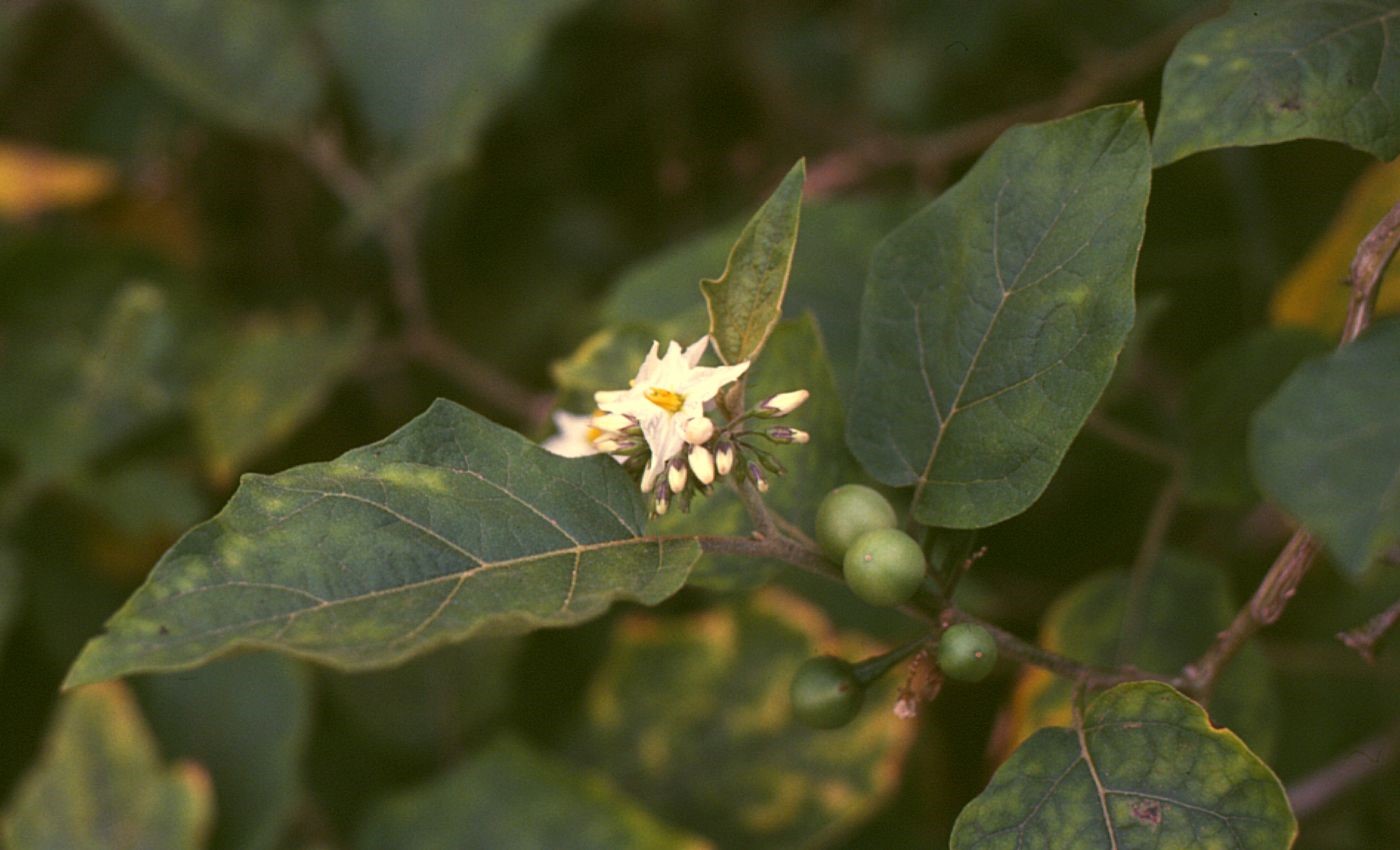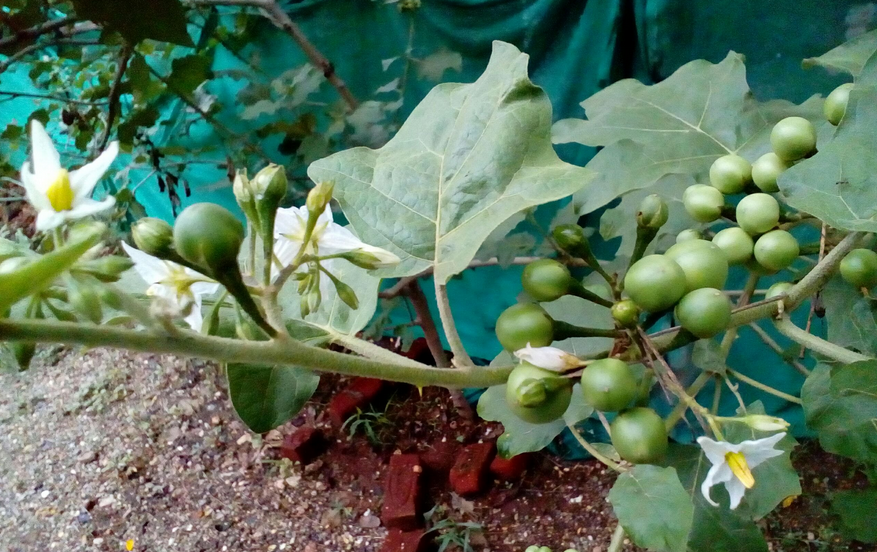Turkey berry
 Common Name: Turkey berry, prickly nightshade, shoo-shoo bush, wild eggplant, thai eggplant, pea eggplant, pea aubergine, devil's fig, prickly solanum
Common Name: Turkey berry, prickly nightshade, shoo-shoo bush, wild eggplant, thai eggplant, pea eggplant, pea aubergine, devil's fig, prickly solanum
Scientific Name: Solanum torvum
Climate: Warm, temperate and cold. From sea level up to 1,200m altitude
Plant Description: The Turkey berry is bushy and spiny, can grow anywhere from 1 to 3 meters tall, and up to 5m tall. The young plant has an orange-grayish stalk that turns white and develops curvy spines over time.
The leaves grow single or in pairs with one half the size of the other. It blooms from August to April.
Its native territory extends from southern USA to Brazil. It has been introduced and naturalized in Asia, Africa, Australia and the Pacific islands.
The fruit is little round and green, turns yellow when ripe.
Cultivation: Favors wet and fertile soil but it can withstand drought. Once the plant reaches 1.5m fruit production becomes continuous.
It is common that the seeds are spread by birds. Given equal start after an ecological disturbance, the turkey berry will outgrow most weeds, grasses and shrubs. Frequently seen on roadsides, vacant lots, abandoned farmlands, landslides and riverbanks.
Turkey berry can grow anywhere from 75 cm and 1.5 m per year. Plants usually live up to 2 years.
 Conditions: Grows best in full sunlight and does well in light shade but cannot survive under a closed forest canopy.
Conditions: Grows best in full sunlight and does well in light shade but cannot survive under a closed forest canopy.
In cattle raising areas is considered a danger because if the cattle eats it, could die because the plant can be poisonous. The turkey berry is very invasive, to stop it, it is necessary to pull it out from the root, removing leaves and stems is not enough.
Uses: The plant leaves and stem are used rudimentarily as soap, and bio essences could be used to produce soap, ointments and hand moisturizers.
Turkey berry has many active ingredients with antiviral, antihipertensive and antiulcerogenic effects, therefore essences can be used to cure kidney stones, vaginal cleanse after childbirth, hiperactivity, cold, cough, pimples, skin diseases, leprosy and infections on male reproductive and urinary systems.
Green fresh fruits are edible and found in the cuisine of Thai, Lao, Jamaica, Cote d’Ivoire and India.
References:
- https://ideas.repec.org/a/erv/tectza/y2016i307.html
- http://www.hear.org/pier/species/solanum_torvum.htm
- https://www.medigraphic.com/pdfs/imss/im-2012/im124e.pdf
- http://www.conabio.gob.mx/malezasdemexico/solanaceae/solanum-torvum/fichas/ficha.htm#2.%20Origen%20y%20distribuci%C3%B3n%20geogr%C3%A1fica
- https://www.eumed.net/rev/tectzapic/2016/01/sosa.html
- https://en.wikipedia.org/wiki/Solanum_torvum
En español: Sosa
